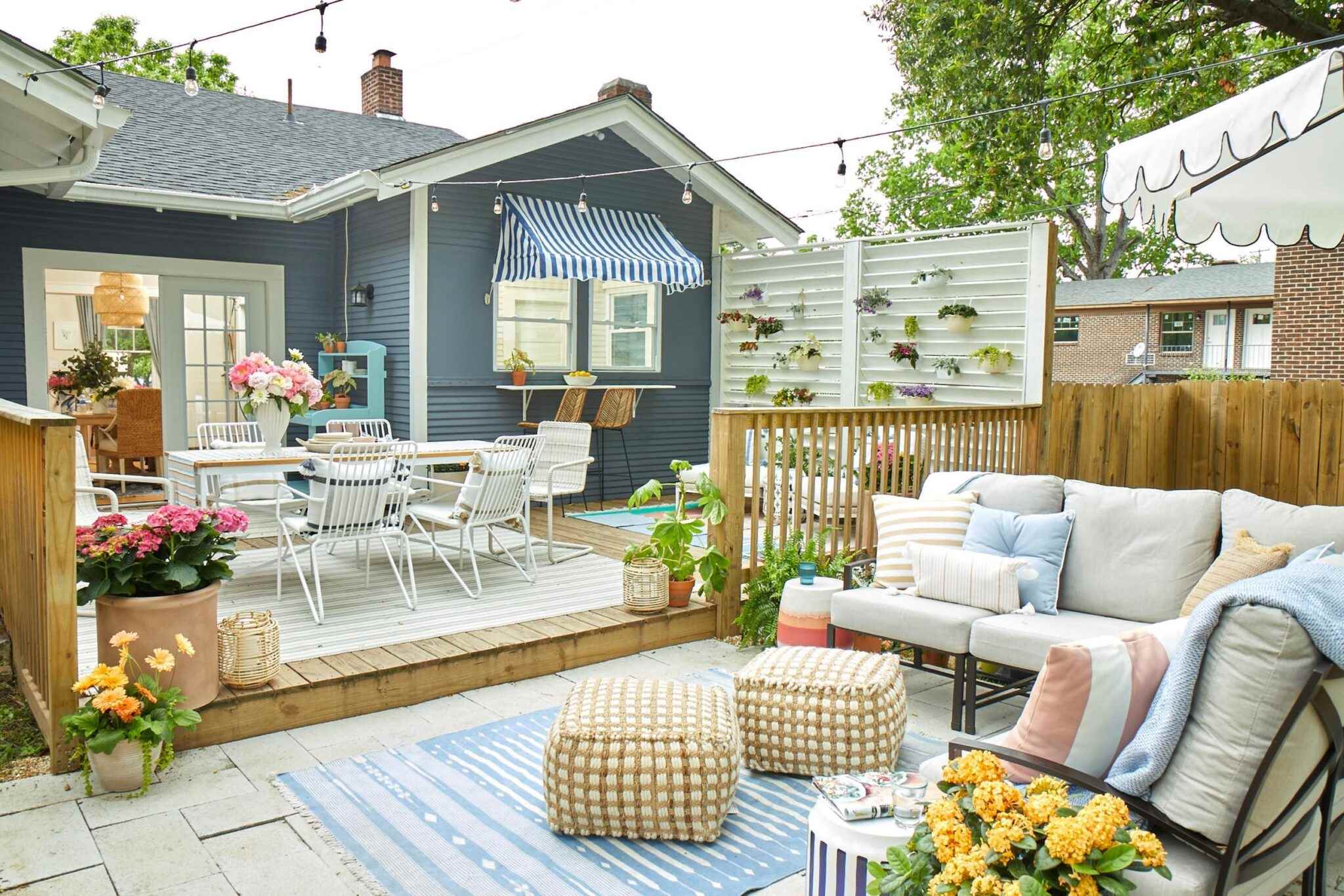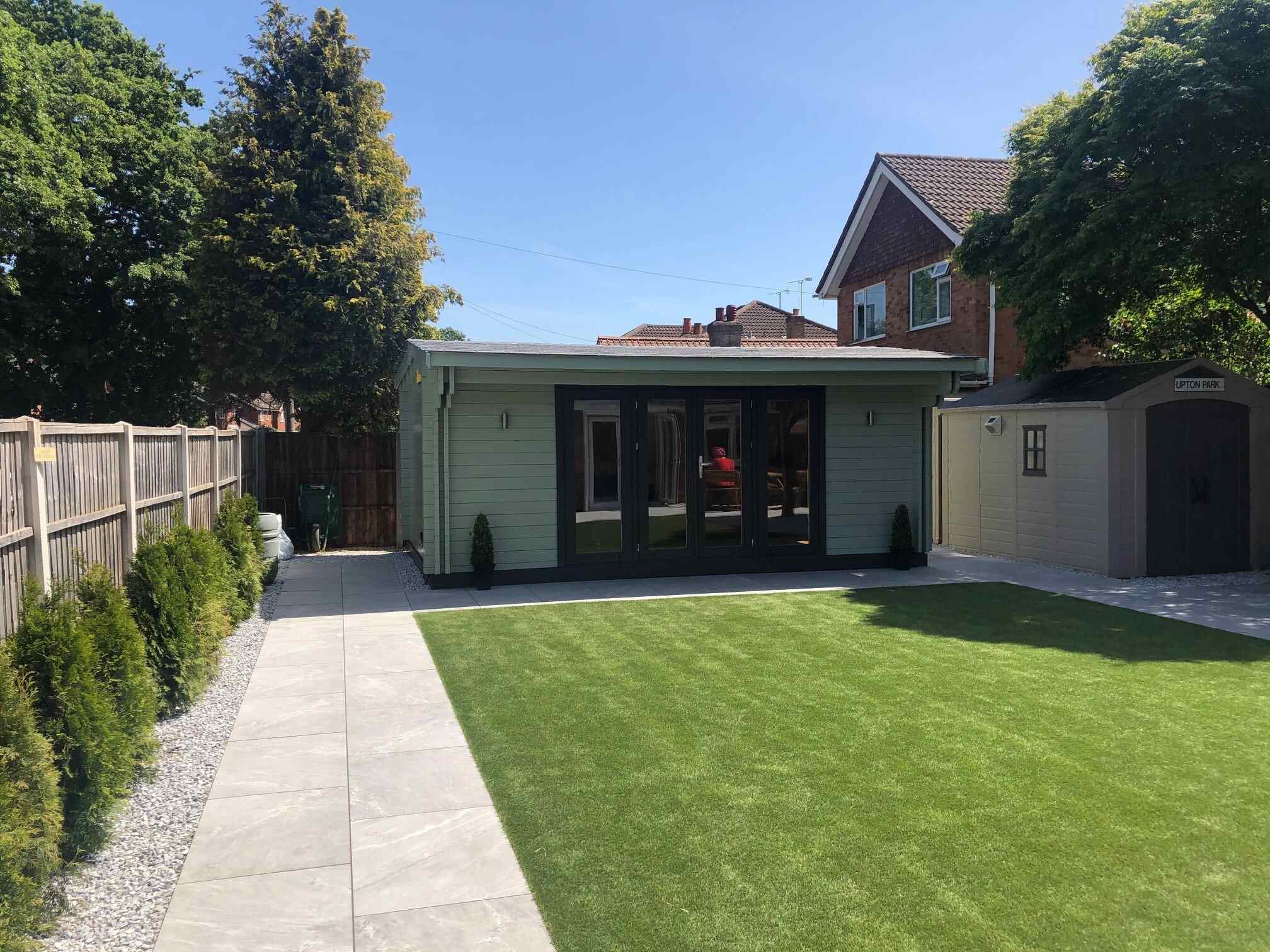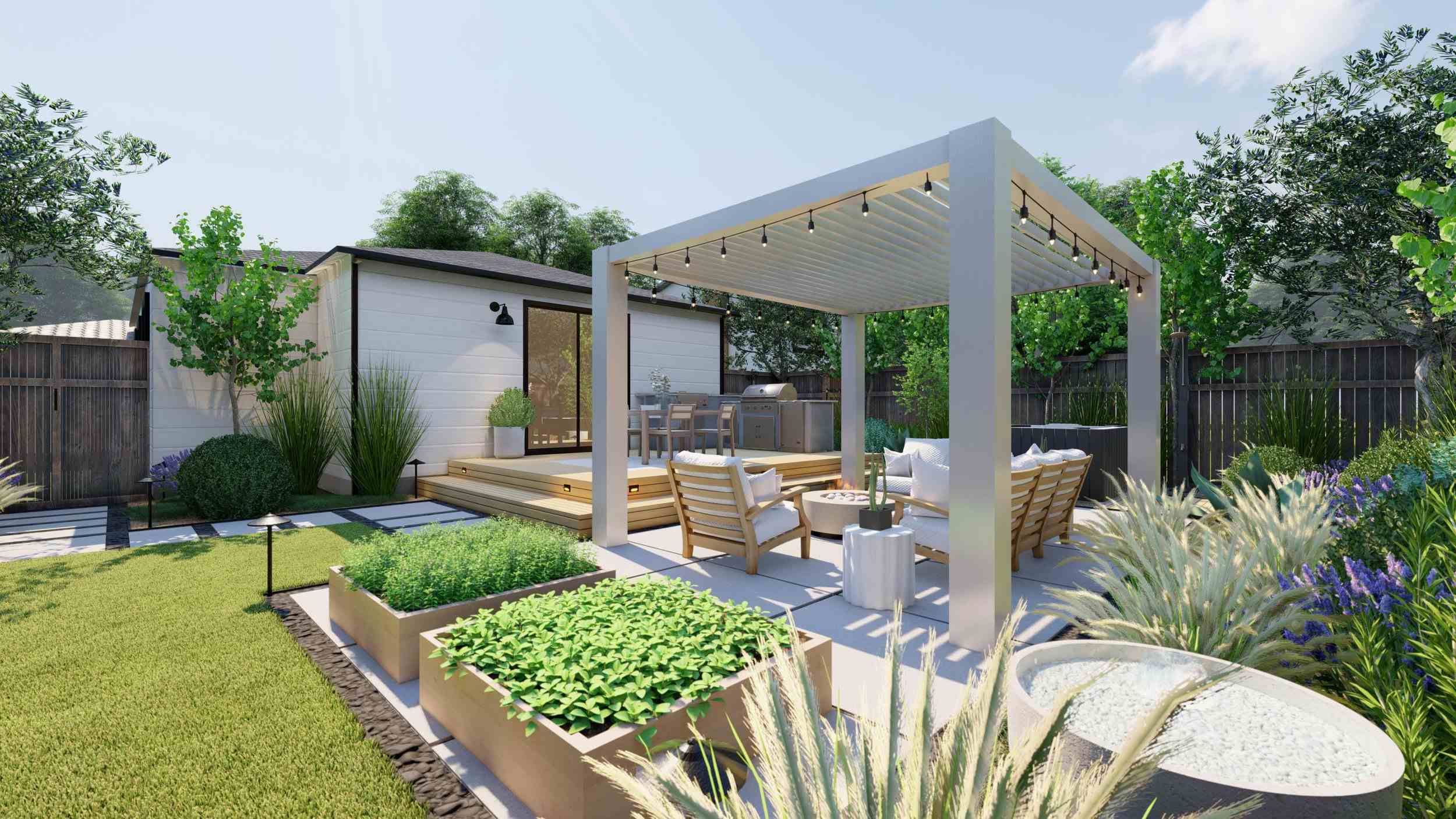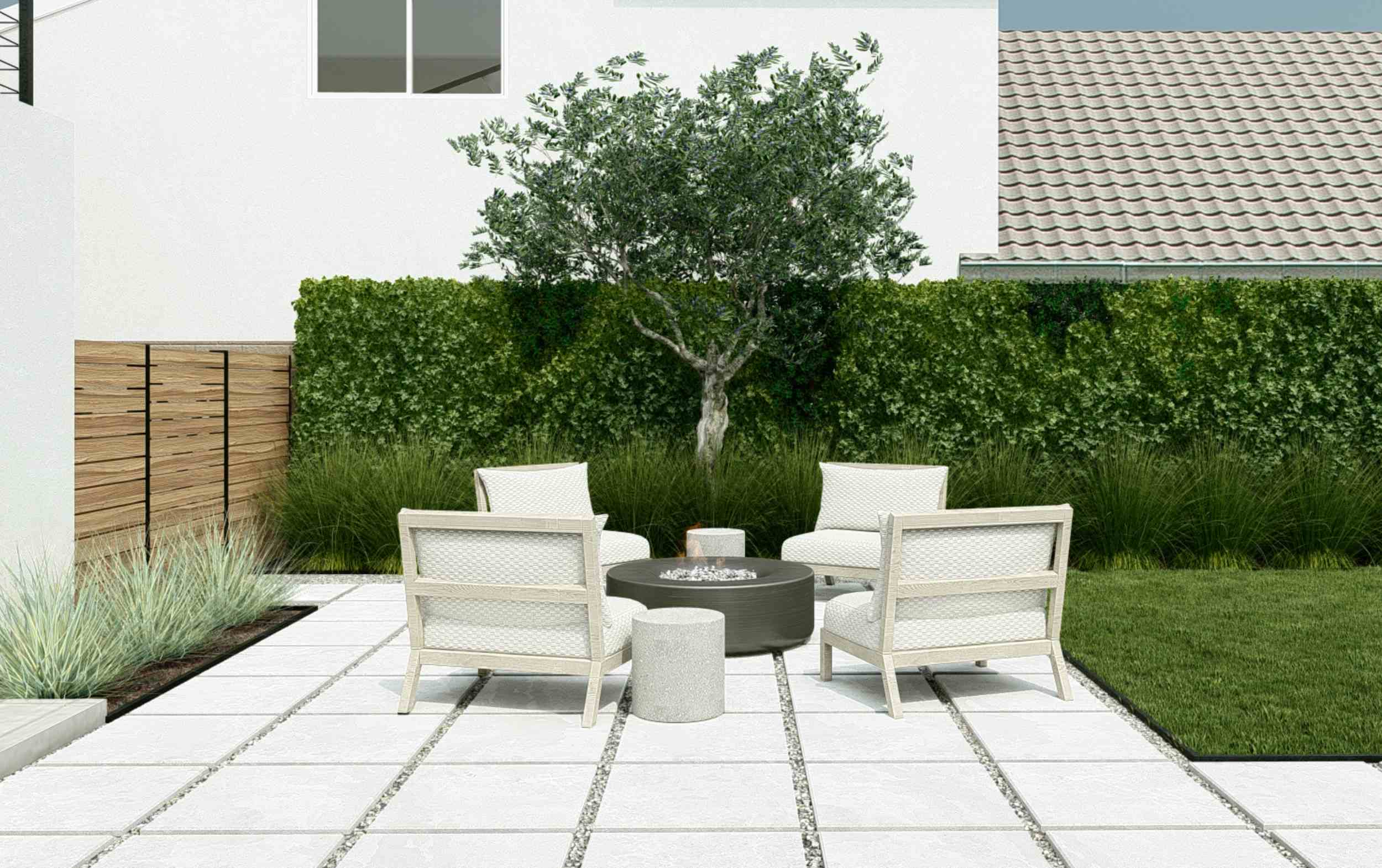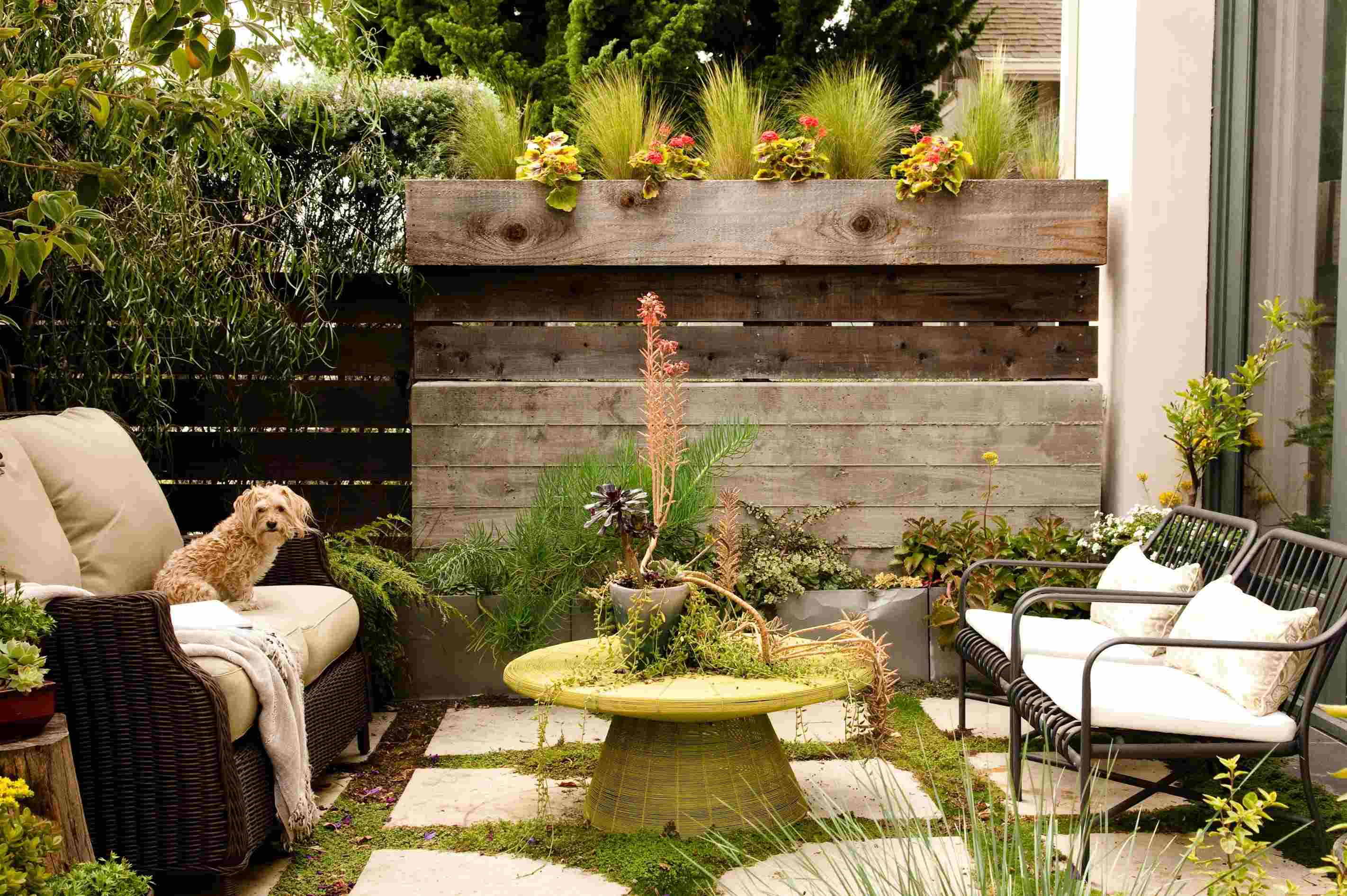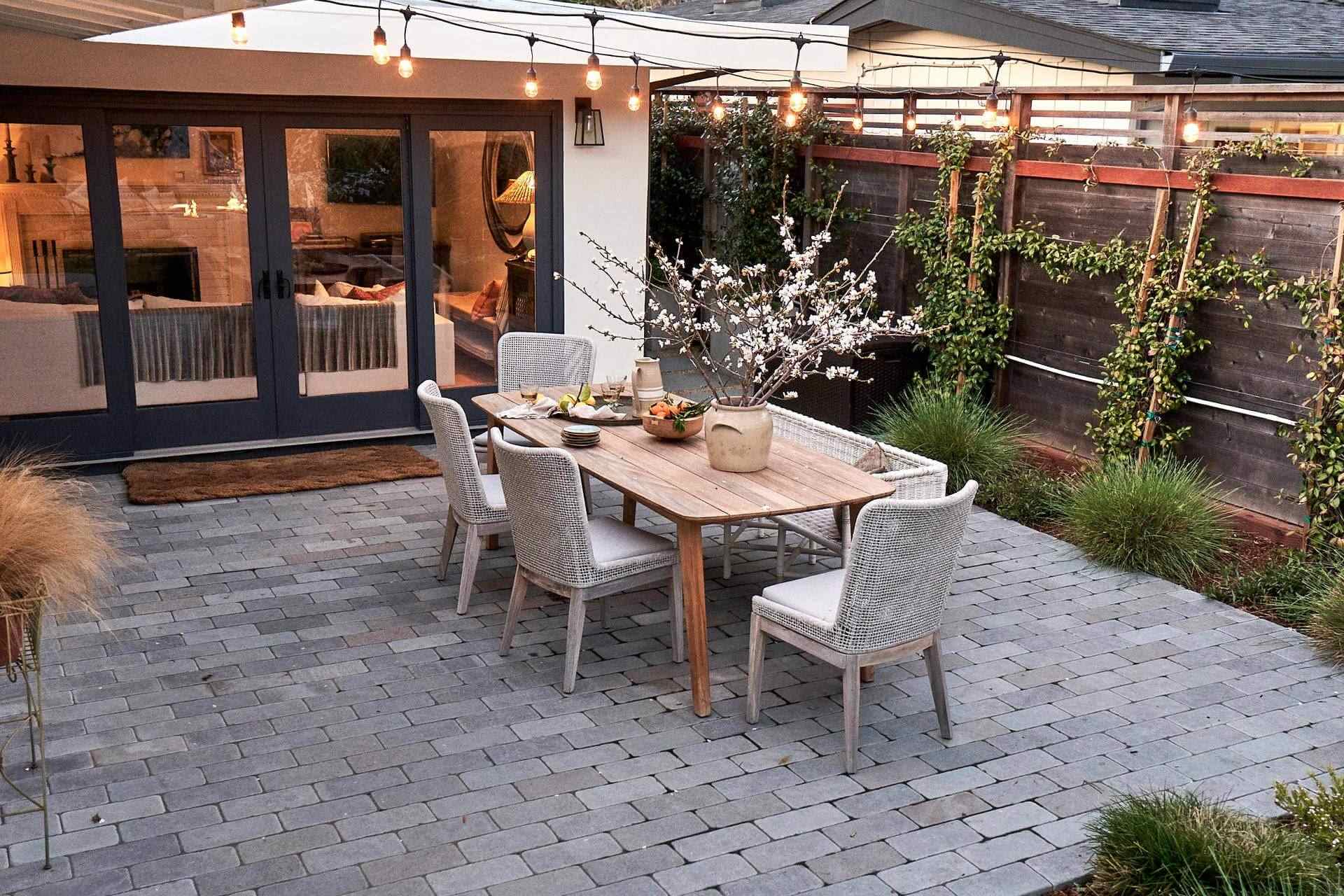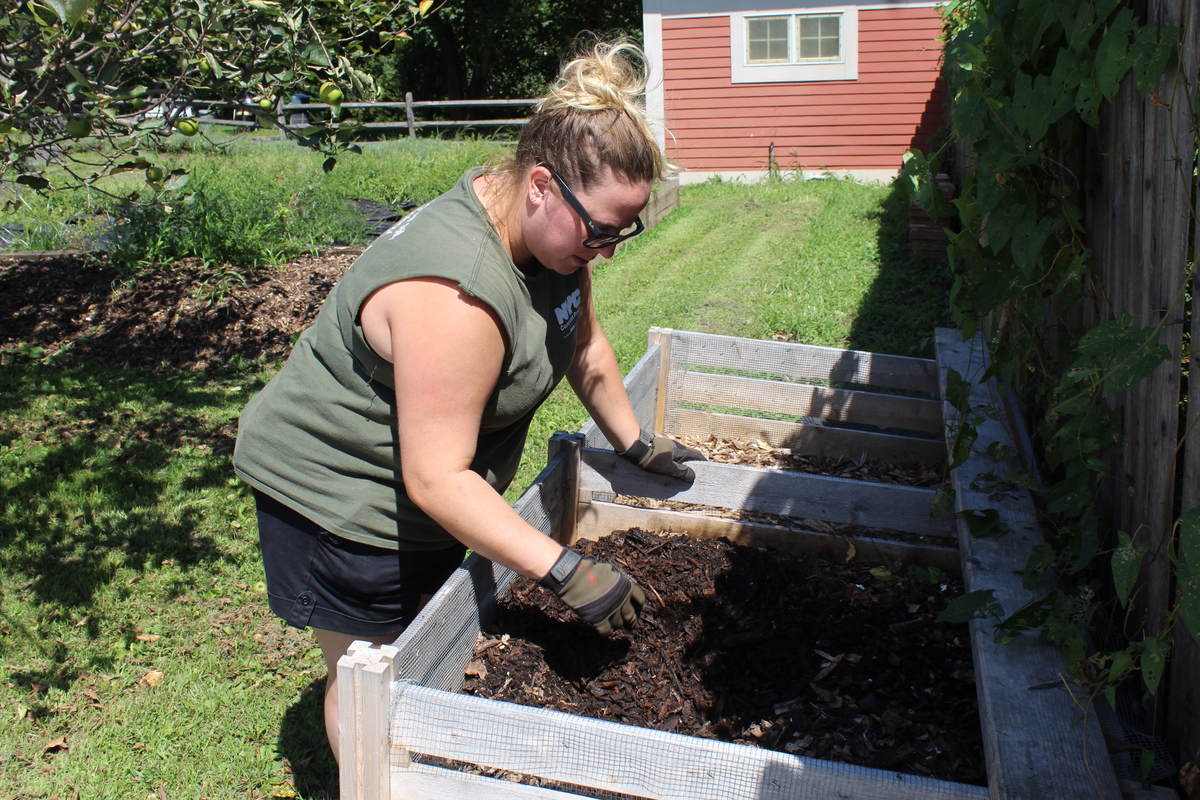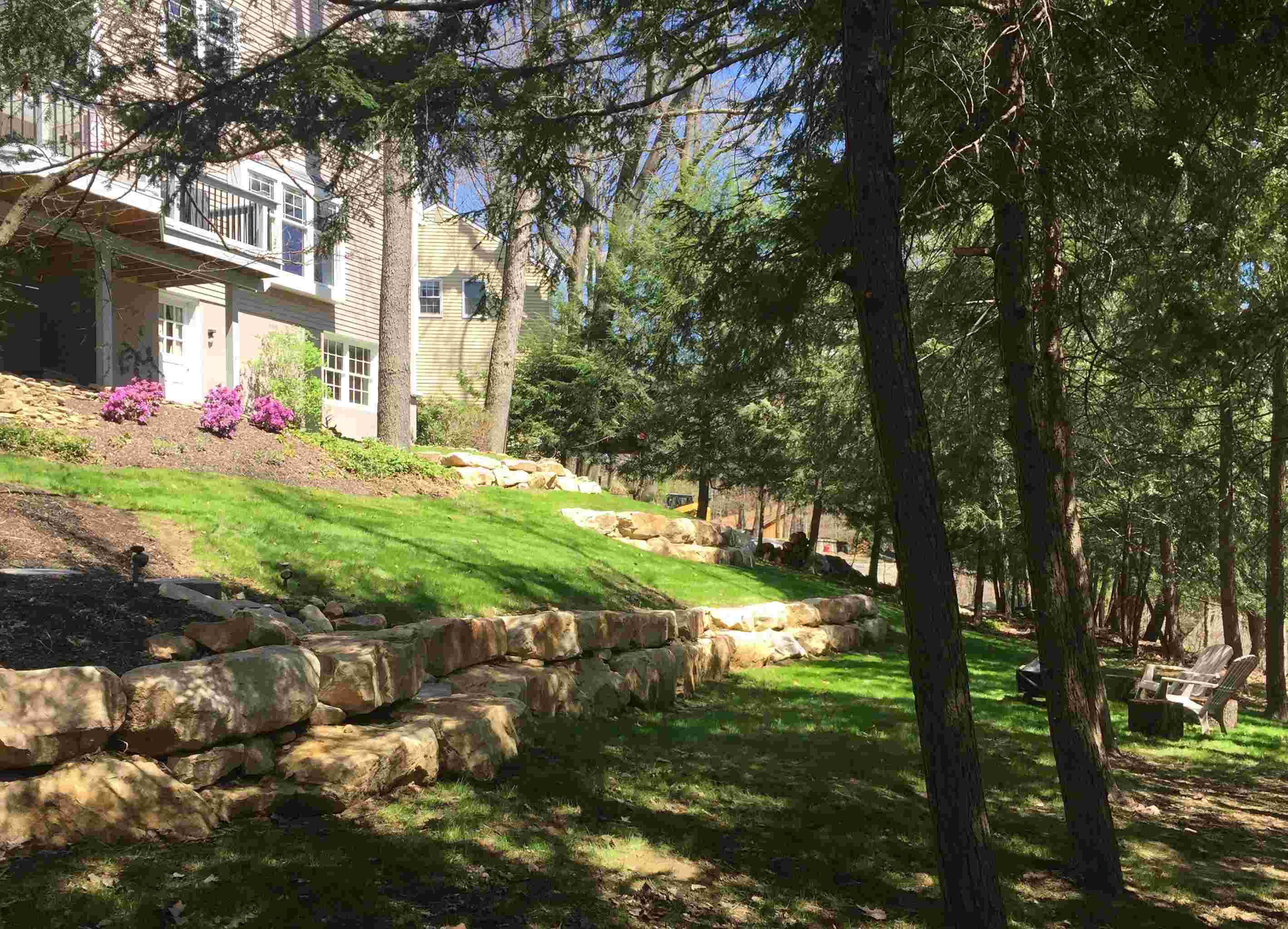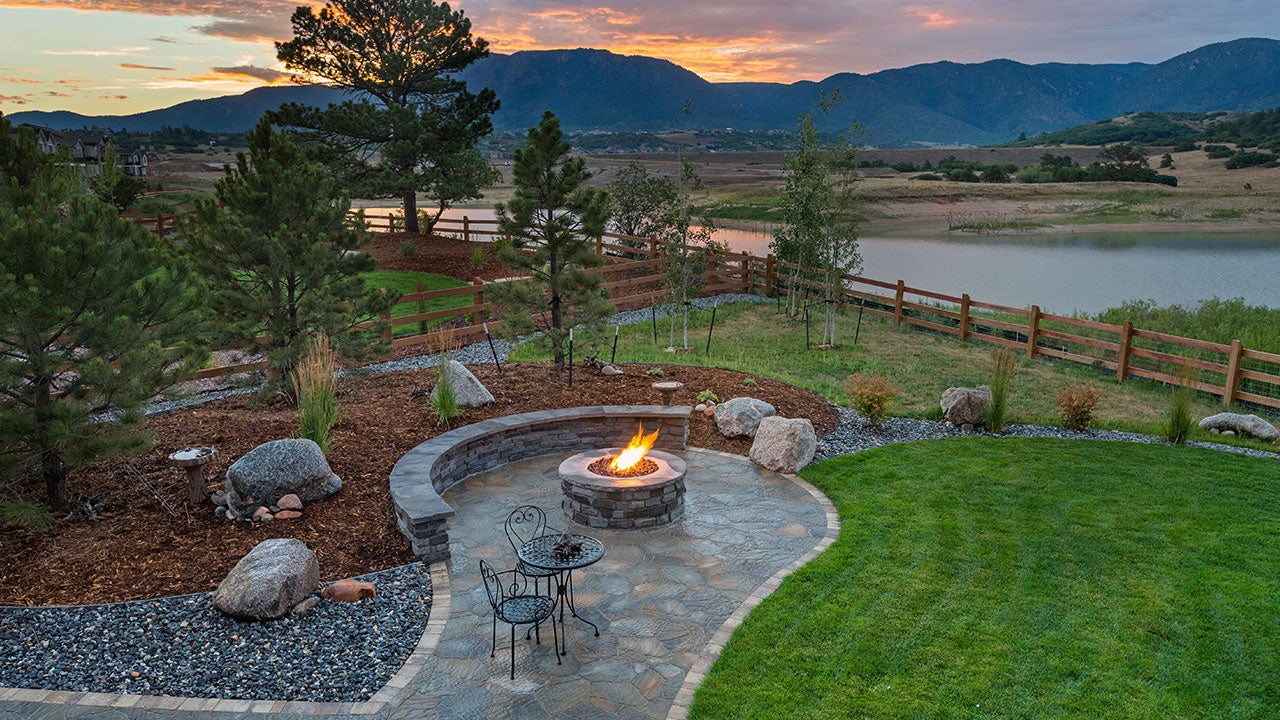Home>Garden Design>How To Landscape A Backyard On A Budget
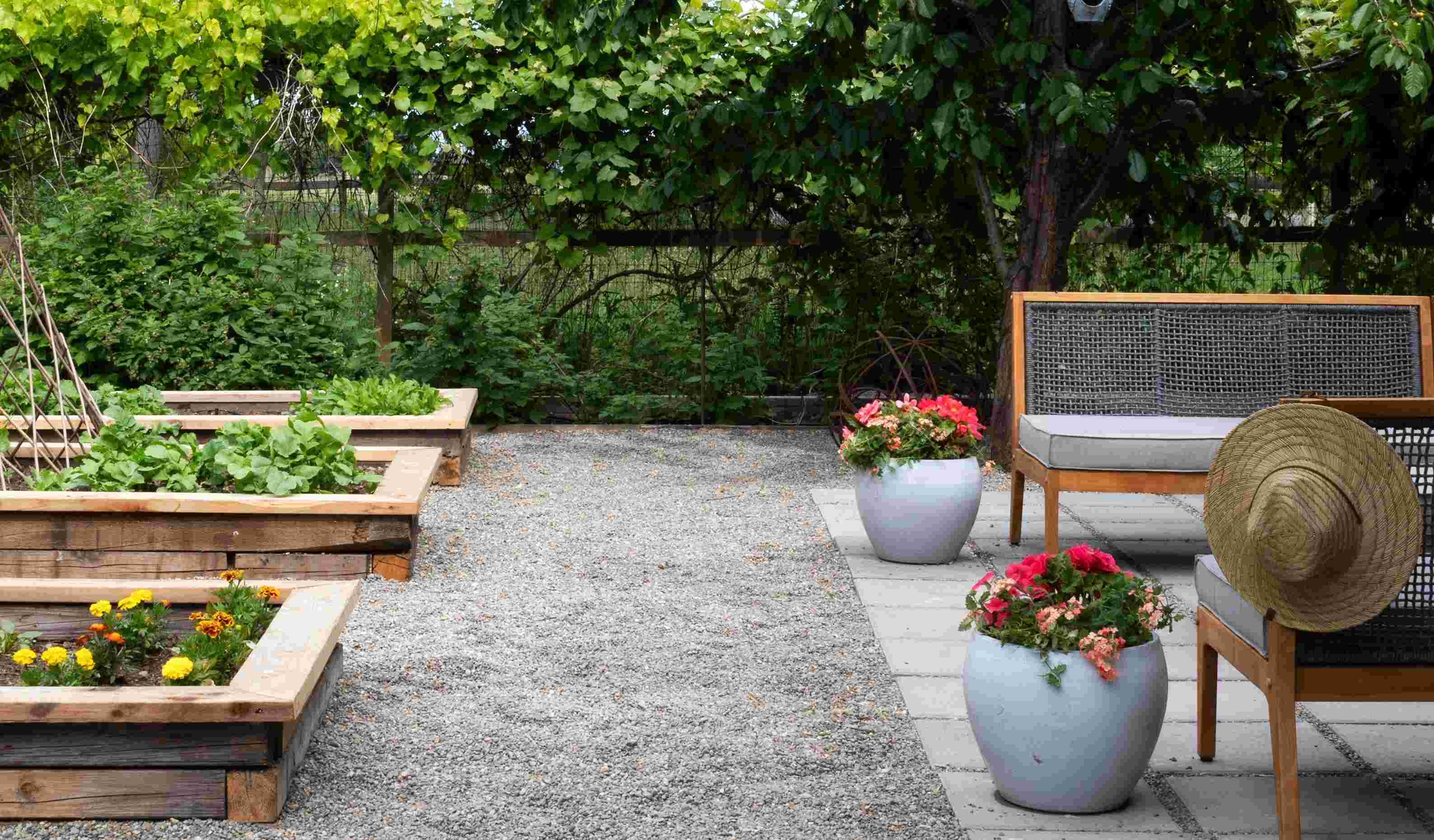

Garden Design
How To Landscape A Backyard On A Budget
Modified: January 22, 2024
Learn how to transform your backyard with stunning landscape design ideas on a budget. Discover expert tips and tricks for creating a beautiful outdoor space.
(Many of the links in this article redirect to a specific reviewed product. Your purchase of these products through affiliate links helps to generate commission for Chicagolandgardening.com, at no extra cost. Learn more)
Table of Contents
Introduction
Welcome to the world of landscape design! Whether you’re a homeowner looking to spruce up your backyard or someone with a passion for gardening, creating a beautiful outdoor space doesn’t have to break the bank. With a little creativity, planning, and a touch of green thumb, you can transform your backyard into a stunning oasis, even on a budget.
Landscaping is not just about making your yard visually appealing; it’s about creating a functional and inviting space where you can relax, entertain guests, and connect with nature. A well-designed landscape can add value to your property and provide a sanctuary for you and your family to enjoy.
In this article, we will explore various strategies for landscaping your backyard on a budget. From assessing your backyard and creating a budget to choosing low-cost materials and incorporating DIY landscaping tips, we’ll guide you through the process of creating a beautiful outdoor space without breaking the bank. Additionally, we’ll provide insights on maximizing space and functionality, planting on a budget, adding outdoor decorations, and maintaining your budget backyard.
So, put on your gardening gloves and get ready to unleash your creativity! With our tips and tricks, you’ll be able to create a stunning backyard that reflects your personal style, all while keeping your wallet happy.
Assessing Your Backyard
Before diving into your backyard landscaping project, it’s crucial to assess the existing conditions and determine the scope of work involved. This assessment will help you better understand the potential of your space and guide your decision-making process.
Start by taking a walk around your backyard and noting its key features. Look for any existing plants, structures, or elements that you want to preserve or incorporate into your new design. Consider the size and shape of the area, as well as any natural elements such as trees, slopes, or water features that may impact your plans.
Next, analyze the current functionality of your backyard. Ask yourself how you intend to use the space and what activities you want to accommodate. Do you envision a cozy seating area for outdoor gatherings, a play area for children, or perhaps a vegetable garden? Understanding your needs and desires will help you prioritize your design elements.
Additionally, pay attention to the existing soil conditions and lighting patterns in your backyard. Some areas may get more sun exposure, while others may be shaded throughout the day. Consider these factors when selecting plants and determining the layout of different functional spaces.
Don’t forget to consider any practical requirements or limitations as well. Is there proper drainage in your yard? Are there any utility lines or underground structures that may affect your design? Taking these factors into account will help you avoid any costly surprises down the road.
Lastly, take the opportunity to assess the overall aesthetics of your backyard. Determine the style or theme you want to achieve and evaluate whether the existing landscaping elements align with your vision. Remember, the goal is to create a cohesive and harmonious outdoor space that reflects your personal taste.
By thoroughly assessing your backyard, you’ll have a solid foundation from which to start your landscaping project. This step will ensure that your design is tailored to your unique space, maximizing its potential and optimizing your budget.
Creating a Budget
Once you’ve assessed your backyard and have a clear understanding of your design goals, it’s time to create a budget. Setting a budget will help you stay on track, manage your expenses, and make informed purchasing decisions throughout the landscaping process.
Start by determining how much you’re willing to spend on your backyard project. Consider factors such as your overall financial situation, the size of your backyard, and the scope of work involved. It’s important to be realistic about your budget and set aside a contingency fund for unexpected expenses.
Next, break down your budget into different categories, such as plants, materials, and labor. Allocate a specific amount of money to each category based on your priorities and the estimated costs. Research the average prices of the items you’ll need to ensure that your budget is feasible.
Don’t forget to account for ongoing maintenance costs as well. Landscaping requires regular upkeep, so be sure to set aside some funds for things like fertilizers, tools, and potential professional services if needed.
In addition, consider alternative sources of funding for your backyard project. Are there any grants, community programs, or local incentives available to help offset the costs? Explore these options to make your budget stretch further.
Lastly, track your expenses as the project progresses. Keep a detailed record of your purchases and labor costs to ensure that you’re staying within your budget. Being aware of your spending will help you make adjustments if necessary and avoid overspending.
Remember, creating a budget is not about limiting your creativity or compromising on quality. It’s about being financially responsible and making thoughtful decisions that align with your goals and constraints. By having a well-defined budget in place, you’ll have a clear roadmap for your landscaping project, allowing you to create a beautiful backyard that fits your financial capabilities.
Planning Your Design
With your budget established, it’s time to start planning the design for your backyard. This is where you can unleash your creativity and bring your vision to life.
Begin by sketching out your ideas on paper or using a digital design tool. Consider the layout and organization of different functional spaces. Think about where you want to place seating areas, pathways, and focal points. Pay attention to the flow and balance of the design, ensuring that all elements work together harmoniously.
Take into account the style or theme you want to incorporate into your design. Whether it’s a modern and minimalist look or a vibrant and colorful garden, choose a design concept that resonates with your personal tastes. Research different design styles online or in landscaping magazines for inspiration.
Consider the various elements that will make up your design, such as planting areas, hardscaping features, and outdoor structures. Determine which plants, flowers, and trees to include, keeping in mind their growth habits, maintenance requirements, and compatibility with your local climate.
When selecting hardscaping features, such as pathways, patios, or retaining walls, opt for cost-effective materials that align with your budget. For example, gravel or concrete pavers can be a more affordable alternative to natural stone.
Don’t forget to consider the overall color scheme and texture of your design. Choose plants and materials that complement each other and create visual interest. Incorporate different heights and textures to add depth and dimension to your backyard.
Remember to think long-term when planning your design. Consider how the plants and materials you choose will evolve and grow over time. Allow adequate space for plants to mature and plan for ongoing maintenance needs.
Once you have a solid design plan in place, consult with a professional landscaper or a knowledgeable salesperson at your local nursery for further guidance. They can provide valuable advice and help refine your design to ensure its success.
By taking the time to plan your design thoughtfully, you’ll be able to create a stunning backyard that meets your aesthetic preferences, functional needs, and budgetary constraints.
Choosing Low-Cost Materials
When working with a limited budget, it’s essential to make wise choices when it comes to selecting materials for your backyard landscaping project. By choosing low-cost materials without compromising on quality, you can achieve a beautiful and budget-friendly outdoor space. Here are some tips to help you make the right choices:
1. Consider Recycled or Repurposed Materials: Look for opportunities to incorporate recycled or repurposed materials into your design. For example, reclaimed wood can be used for building raised beds or creating unique outdoor furniture. Check local salvage yards or online classifieds for great deals on used materials.
2. Opt for Cost-Effective Hardscaping: Instead of expensive natural stone, consider more affordable options like concrete or gravel for paths, patios, and retaining walls. They can provide a similar aesthetic at a fraction of the cost. Additionally, explore local suppliers and compare prices to find the best deals.
3. Choose Low-Maintenance Plants: Consider selecting plants that are low-maintenance and can thrive in your local climate. Native plants are often a great choice as they are well adapted to the conditions in your area and require less water and maintenance. They can also be more affordable since they don’t require specialized care.
4. Buy in Bulk: When purchasing materials such as mulch, gravel, or plants, inquire about bulk pricing. Buying in larger quantities can often result in significant savings. Additionally, consider teaming up with neighbors or friends to split the cost of bulk orders.
5. Shop at Discount Stores or Online: Explore discount stores, garden centers, or online marketplaces for deals on plants, decor, and landscaping supplies. You may find discounted prices on items like pots, planters, outdoor furniture, or even discounted or clearance plants.
6. Repurpose Existing Items: Look for creative ways to repurpose items you already own. For example, old containers or buckets can be turned into planters, or old furniture can be refurbished and given new life in your backyard. Not only will this save money, but it will also add a unique touch to your design.
7. Do It Yourself: Take on some of the landscaping tasks yourself to save on labor costs. From planting and mulching to building simple structures, there are many DIY projects you can tackle with a little research and effort. Just be sure to assess your skills and safety precautions before taking on any major projects.
By being resourceful and strategic in choosing low-cost materials, you can create a beautiful backyard that fits your budget. Remember, it’s not always about the price tag, but rather about finding affordable options that will still contribute to the overall aesthetic and functionality of your outdoor space.
DIY Landscaping Tips
Embarking on a DIY landscaping project can be an exciting and fulfilling experience. By taking a hands-on approach, you can save money on labor costs and have full control over the design and implementation of your backyard. Here are some DIY landscaping tips to help you achieve professional-looking results:
1. Start with a Plan: Before you start digging or planting, create a detailed plan for your landscaping project. This will help you stay organized and ensure that you’re making the most of your available space and budget.
2. Take Care of the Basics: Proper soil preparation is crucial for healthy plant growth. Invest time in removing any weeds, improving soil quality, and adding organic matter or compost to enrich the soil. Adequate watering and drainage are also essential factors to consider.
3. Utilize Vertical Space: If you have limited horizontal space, make use of vertical elements to maximize your garden’s potential. Install trellises, vertical gardening structures, or hanging baskets to add greenery and create visual interest.
4. Divide and Conquer: Save money on purchasing new plants by dividing existing perennials or borrowing plants from friends and family. Many plants can be divided into smaller clumps and transplanted into different areas of your garden, creating a more lush and varied landscape.
5. Implement Mulching: Adding a layer of organic mulch around your plants not only helps retain moisture and suppresses weeds but also adds visual appeal to your garden. Use locally available materials like wood chips, straw, or compost to keep costs low.
6. DIY Paver Pathways: Create charming pathways by building your own pavers. Use concrete molds, pour and set the concrete mix, and let it dry. Once hardened, arrange your custom-made pavers to create beautiful walking pathways throughout your garden.
7. Build Hardscape Features: If you’re feeling handy, consider tackling the construction of hardscape features yourself. Whether it’s a wooden deck, a pergola, or a fire pit, there are plenty of online resources and tutorials available to guide you through the process.
8. Implement Water-Saving Techniques: Minimize water consumption and save money by implementing water-saving techniques such as installing a rain barrel to collect rainwater for your garden or using drip irrigation systems for targeted watering.
9. Explore DIY Decorations: Add a personal touch to your backyard by creating DIY decorations. Paint old pots, build birdhouses, or repurpose old furniture to add character and whimsy to your outdoor space.
Remember, safety should always be a priority when undertaking any DIY project. Research the proper techniques and use the necessary safety equipment to protect yourself and ensure successful results.
By embracing DIY landscaping, you not only save money but also develop new skills and gain a sense of accomplishment. As long as you approach the projects with patience, creativity, and a willingness to learn, your DIY endeavors can transform your backyard into a beautiful and personalized oasis.
Maximizing Space and Functionality
When working with a limited backyard space, it’s essential to maximize every square inch to create a functional and inviting outdoor area. By employing smart design strategies, you can make the most of your space and ensure that it serves its purpose effectively. Here are some tips to help you maximize space and functionality in your backyard:
1. Create Zones: Divide your backyard into distinct zones based on their intended use. Whether it’s a dining area, a play area, or a relaxation space, allocating specific areas for different activities helps define the functionality of each space and prevents them from overlapping.
2. Utilize Vertical Space: Don’t forget to make use of vertical space to add more functionality to your backyard. Install wall-mounted planters, vertical gardens, or hanging baskets to maximize greenery without sacrificing precious floor space. You can also incorporate wall-mounted shelves or hooks to hang tools or accessories.
3. Build Multi-Purpose Structures: Consider adding multi-purpose structures that serve more than one function. For example, a bench with built-in storage can provide seating while also offering space to store gardening tools or cushions. A pergola can provide shade for outdoor seating as well as support climbing plants.
4. Choose Space-Saving Furniture: Opt for furniture pieces that are designed to save space. Look for foldable tables and chairs, stackable stools, or benches with built-in storage. This way, you can easily rearrange or store furniture when it’s not in use, providing more flexibility and freeing up space.
5. Select Compact and Dwarf Plants: If you have a small backyard, choose compact or dwarf plant varieties. These plants are specifically bred to stay small, allowing you to enjoy a variety of greenery without overwhelming the space. Additionally, consider using hanging plants or vertical gardens to add visual interest without taking up much ground space.
6. Incorporate Mirrors: Mirrors can create an illusion of space by reflecting light and making the area appear larger. Consider strategically placing mirrors on walls or fences to add depth and visually expand your backyard. Just ensure that they are positioned to reflect an appealing aspect of your garden.
7. Use Focal Points: Integrate focal points such as statues, fountains, or art installations to draw the eye and create visual interest. These focal points can distract from the limited space and serve as conversation pieces, enhancing the overall functionality and allure of your backyard.
8. Employ Seamless Transitions: Create a seamless transition between indoor and outdoor spaces by using similar color schemes, materials, or design elements. This integration visually extends your living space and blurs the boundaries, making your backyard feel like an extension of your indoor environment.
By implementing these strategies, you can make the most of your limited backyard space while ensuring that it serves multiple purposes. With thoughtful planning and smart design choices, you can transform even the smallest of spaces into a functional and delightful outdoor oasis.
Planting on a Budget
Adding plants to your backyard is an essential part of any landscaping project, but it doesn’t have to break the bank. With a little know-how and creativity, you can create a lush and vibrant garden without spending a fortune. Here are some tips for planting on a budget:
1. Start from Seeds or Cuttings: One of the most economical ways to fill your garden with plants is by starting from seeds or cuttings. Many plants can be easily propagated from seeds or by taking cuttings from existing plants. You can save money by growing your plants from scratch and enjoy the satisfaction of watching them grow.
2. Choose Perennials: Opt for perennial plants rather than annuals. Perennials come back year after year, while annuals need to be replanted annually. While the initial cost of perennials may be higher, they will save you money in the long run by not having to purchase new plants each year.
3. Explore Local Nurseries or Garden Centers: Visit local nurseries or garden centers in your area to find budget-friendly plants. They often have sales, clearance sections, or special promotions where you can find discounted plants. Additionally, they can provide expert advice on suitable plants for your specific region.
4. Shop at Plant Swaps or Exchanges: Participate in local plant swaps or exchanges where garden enthusiasts trade plants with one another. This is a great way to acquire new plant varieties for your garden at little to no cost. It also allows you to connect with fellow gardeners in your community.
5. Plan for Seasonal Sales: Take advantage of seasonal sales at garden centers or online plant retailers. They often offer discounted prices on plants that may not be in peak bloom or are being sold off to make room for new inventory. Plan your planting schedule accordingly to take advantage of these deals.
6. Divide and Share: Divide and share perennial plants with neighbors, friends, or family members. Many plants can be split into smaller clumps and transplanted, creating more plants to fill your garden without additional cost. It’s a win-win situation as you can share your abundance with others while expanding your own garden.
7. Utilize Free or Low-Cost Organic Material: Improve your soil fertility by using free or low-cost organic materials. Compost kitchen scraps, leaves, or grass clippings to create nutrient-rich compost. Mulch your plants with straw, wood chips, or shredded bark to help retain moisture and suppress weeds.
8. Focus on Native Plants: Choose native plants that are well adapted to your local climate and require less maintenance and water. Native plants are often more affordable as they are readily available and have lower transportation costs. They also provide habitat for local wildlife and contribute to the biodiversity of your area.
With these budget-friendly planting tips, you can create a beautiful and thriving garden without breaking your bank account. Enjoy the process of selecting, growing, and nurturing your plants while transforming your backyard into a green oasis.
Adding Outdoor Decorations
Outdoor decorations play a crucial role in enhancing the overall aesthetic appeal and ambiance of your backyard. They add personality, charm, and a touch of style to your outdoor space. However, decking out your yard with decorations doesn’t have to be expensive. Here are some ideas to add outdoor decorations on a budget:
1. Incorporate DIY Projects: Get creative and make your own outdoor decorations. DIY projects can be a fun and cost-effective way to personalize your space. Repurpose old items like mason jars, wine bottles, or wooden pallets to create lanterns, planters, or garden signs. Use your artistic skills to paint rocks or create unique garden ornaments.
2. Utilize Natural Elements: Bring the beauty of nature into your backyard by incorporating natural elements as decorations. Use driftwood, rocks, or seashells to create interesting focal points. Place potted plants or flowers strategically around your outdoor space to add color and freshness.
3. Shop Secondhand: Explore thrift stores, garage sales, or online marketplaces for affordable outdoor decorations. You can find unique and charming pieces that are gently used at a fraction of the original cost. Look for items like lanterns, statues, or patio furniture to enhance your outdoor aesthetic.
4. Utilize Lighting: Lighting can transform the ambiance of your backyard, especially during the evening hours. Use solar-powered lights, string lights, or fairy lights to create a magical atmosphere. Hang them from trees, drape them along fences, or place them in glass jars for an enchanting glow.
5. Embrace Repurposed Materials: Look for opportunities to repurpose materials that you already have. Repurpose old tires as colorful planters, create a garden fence using old wooden pallets, or turn an old ladder into a vertical herb garden. Embracing repurposed materials not only adds character but also reduces waste.
6. Add Water Features: Incorporating a water feature can add a soothing and tranquil element to your backyard. Consider adding a small fountain, bird bath, or a DIY pond made from a repurposed container. The sound of flowing water and the presence of wildlife will create a serene and inviting atmosphere.
7. Create a Cozy Seating Area: Transform a corner of your backyard into a cozy seating area where you can relax and enjoy your outdoor space. Use affordable outdoor furniture or repurpose old furniture with a fresh coat of paint. Add comfortable cushions and pillows for a touch of coziness. Incorporate a DIY fire pit or chiminea for warmth and ambiance.
8. Showcase Artwork or Sculptures: Displaying artwork or sculptures can add a unique touch to your backyard. Look for local artists or sculptures made from recycled materials for affordable options. Place them strategically throughout your yard to create focal points and ignite conversation.
By incorporating outdoor decorations on a budget, you can transform your backyard into a visually appealing and inviting space. Let your creativity shine and select pieces that reflect your personal style, enhancing the beauty and enjoyment of your outdoor oasis.
Maintaining Your Budget Backyard
After all the hard work of creating a budget-friendly backyard, it’s important to maintain it to ensure its longevity and continued beauty. With a little regular care and attention, you can keep your backyard looking its best without breaking the bank. Here are some tips for maintaining your budget backyard:
1. Regularly Weed and Mulch: Keep weeds under control by regularly pulling them out or using natural weed suppressants. Apply mulch around plants to help retain moisture and suppress weed growth. Mulching also adds a neat and finished look to your garden beds.
2. Water Efficiently: Water your backyard wisely to conserve water and reduce your water bill. Water deeply and infrequently to encourage deep root growth. Consider using soaker hoses or drip irrigation systems to deliver water directly to the roots of your plants, minimizing waste.
3. Prune and Trim Regularly: Prune and trim your plants and trees regularly to maintain their shape, encourage healthy growth, and prevent overgrowth. Removing dead or damaged branches not only improves the appearance of your backyard but also promotes the overall health of your plants.
4. Pest Control: Keep an eye out for pests that can damage your plants. Regularly inspect your garden for signs of insect infestations or diseases. Use organic pest control methods whenever possible, such as introducing beneficial insects or using homemade natural sprays.
5. Fertilize Naturally: Maintain the fertility of your soil by using natural fertilizers, such as compost or organic fertilizers. These provide essential nutrients for healthy plant growth and can be created at home using kitchen scraps, yard waste, or other organic materials.
6. Clean and Maintain Hardscape: Regularly clean and maintain any hardscape features in your backyard, such as patios, pathways, or decks. Sweep away debris, remove stains, and repair any damages to keep them looking their best. Use natural or homemade cleaners to avoid harsh chemicals.
7. Monitor and Adjust: Continuously monitor your backyard to identify any issues or areas that need attention. Keep an eye out for plant diseases, yellowing leaves, or signs of over or underwatering. Adjust your care and maintenance routines accordingly to address any problems and ensure the health of your plants.
8. Stay Organized: Keep your gardening tools and supplies organized for easy access and efficient maintenance. Invest in quality tools that will last longer and save you money in the long run. Clean and store your tools properly to prevent rust and extend their lifespan.
Remember, maintaining your budget backyard is not only about keeping it aesthetically pleasing but also about taking care of the natural elements and promoting a healthy ecosystem. By implementing these maintenance practices, you can enjoy a beautiful and thriving backyard while maximizing your budget.
Conclusion
Creating a stunning backyard landscape on a budget is not only possible but also a rewarding endeavor. By following the steps outlined in this article, you can transform your outdoor space into a beautiful and functional oasis without breaking the bank.
Start by assessing your backyard and setting a realistic budget. Plan your design carefully, considering the functionality, aesthetics, and available space. Choose low-cost materials and utilize DIY techniques to save on expenses. Maximize space and functionality by dividing your backyard into zones, utilizing vertical space, and incorporating multi-purpose structures.
When it comes to your plant selections, explore cost-effective options such as starting from seeds or cuttings, choosing perennials, and shopping for discounted plants. Add charm and personality to your backyard by incorporating outdoor decorations, either through DIY projects, repurposed materials, or secondhand items.
Maintaining your budget backyard is crucial to ensure its long-term beauty and health. Regularly weed, mulch, water efficiently, and prune your plants. Implement natural pest control and fertilization techniques. Keep your hardscape clean and organized, and monitor your backyard for any issues or adjustments needed.
Remember, landscaping on a budget doesn’t mean sacrificing quality or creativity. With careful planning, smart choices, and a little DIY spirit, you can create a backyard that reflects your style, enhances your lifestyle, and brings you closer to nature.
So, roll up your sleeves, put on your gardening gloves, and embark on the journey of transforming your backyard into a budget-friendly haven. Let your creativity bloom, and enjoy the process of creating a space that brings you joy, relaxation, and countless memorable moments for years to come.
